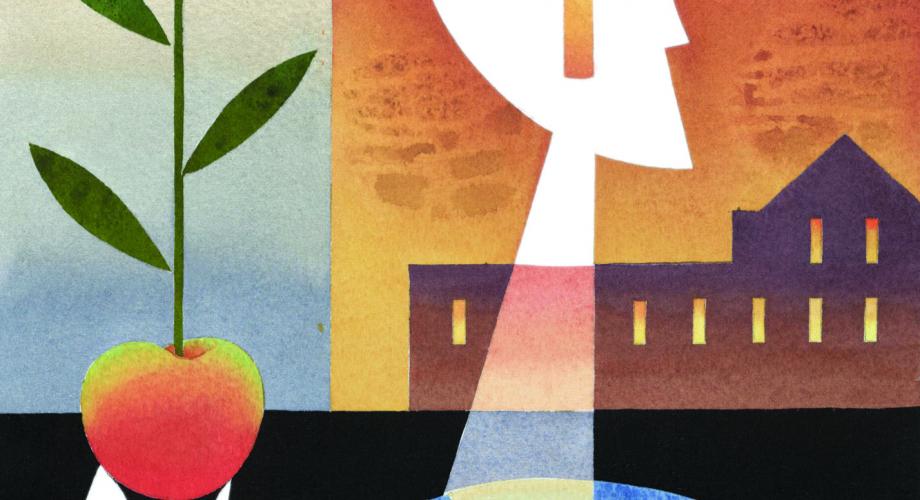Several factors have contributed to student housing's stability during the pandemic.
A new academic school year has kicked off, and students are rushing back to campuses across the U.S.—if they ever left. Student housing, like many other industries and sectors, took a hit due to the pandemic; however, student housing has presented several recession-resistant traits since March 2020. Student housing’s resiliency has shown it was able to outperform the traditional rental housing industry as well as within its own cohort.
A recent study from Pierce Education Properties, “COVID-19 and Student Housing - Myths and Realities,” describes and compares student housing during the pandemic against the more traditional apartment housing industry.
While most universities transitioned in Spring 2020 and Academic Year (AY) 2020-21 from conventional in-person learning to online mediums, students remained near campuses. “The method of course delivery had almost no impact on occupancy of off-campus housing, as students demonstrated a high propensity to return to college irrespective of course delivery method,” according to Pierce Education Properties. It is expected that as four-year public universities (Power Five football conference schools) return to in-person education for AY 2021-22, students will follow with higher occupancy rates as well as continued enrollment growth.
Despite the reopening of campuses and classrooms, on-campus housing will not fully return to pre-pandemic levels. Pierce Education cites San Diego State University as an example, saying residence halls will not hit their 7,500 student-
capacity but will instead be around 6,000 students this fall—more than the 2,100 residents from spring 2021 plus the incoming freshman class.
Pierce Education and RealPage both predict a large incoming fall 2021 freshman class. “Some of these young adult renters are college students eager to leave Mom and Dad and head back out on their own rather than enduring another minute of remote learning from their childhood bedrooms,” says RealPage Chief Economist Greg Willett in an article on student-
competitive properties. These student-competitive apartments are conventional communities adjacent to campuses but rent by the unit not the bed and are not limited to only students.
Student housing occupancies were only down 3% as of May 2021 despite two-thirds of universities offering online or hybrid teaching during AY 2020-21. And spring 2021 occupancies are up roughly 1% from fall 2020 at Pierce Education Properties.
Collections, compared to conventional multifamily communities, have been strong for student housing. The Pierce portfolio saw only a slight dip in collections during the 2020-21 academic year compared to 2019-20 (98.1% vs. 98.5%).
In May 2021, student housing pre-leas was only 1.2% below year-over-year numbers. “Pre-leasing velocity is projected to surpass last year’s levels over the summer and end up with higher fall occupancies than AY 2020-21,” according to the Pierce study. This can be said too for the student-competitive properties. This sector saw a major drop-off in occupancies from peak levels in the fall of 2019—170 basis points in 2020 with 94.2% as the low, according to RealPage. Yet, there has been a rebound up to 95.6%, the highest since October 2019. RealPage predicts availability might be limited as apartments go off the market near campuses.
This high demand has already arrived. The University of Arkansas announced the 2021 incoming class is the largest group of first-year students ever. This has resulted in the university relocating nearly 300 upper-level students from on-campus living to nearby apartments. There are approximately 6,200 beds for students. According to The Dartmouth, the student newspaper of Dartmouth College, the Ivy League college has nearly 130 students not approved for on-campus living because of the insufficient number of beds. The students were placed on a waitlist.
While students across the country continue to have trouble finding beds for the fall, rental rates are climbing in student housing. Another proof to Pierce’s theorem of recession-resistant student housing is the sector saw 1.64% rent growth during the 2020-21 academic year, roughly half the predicted rent growth for the upcoming academic year. Multifamily was down 4.18% from the third quarter of 2019 to the third quarter of 2020. The Pierce study states two-year compounded rent growth in student housing will reach nearly 3.5% compared to the roughly 5% decline projected for multifamily.
Another strong factor contributing to the success of student housing during the pandemic downturn and an item to look forward to soon is investments in the sector. Pierce cites the Investor Intentions Survey from the Pension Real Estate Association, which states nearly a fifth of institutional investors plan to allocate funds to student housing in 2021. That is the highest level since 2017.
Student housing has outperformed other real estate asset classes by different metrics, and it will continue this path going forward. Increased capital investment interests, stronger university enrollment and the return to the classroom in the upcoming academic year have influenced the strength that was and is still
being seen in student housing as the COVID-19 pandemic continues.
Michael Miller is the Managing Editor with NAA.
